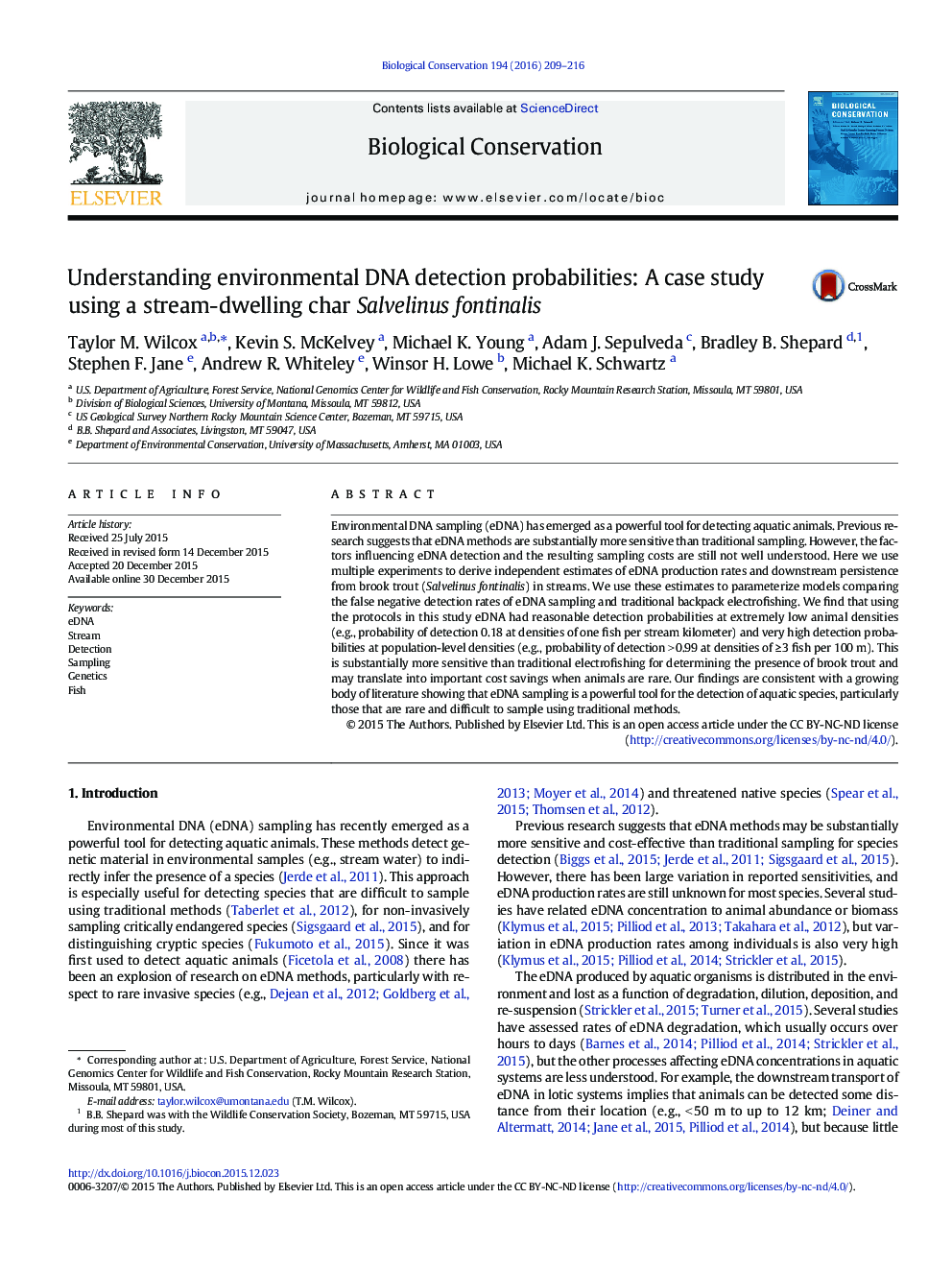| Article ID | Journal | Published Year | Pages | File Type |
|---|---|---|---|---|
| 6298812 | Biological Conservation | 2016 | 8 Pages |
Abstract
Environmental DNA sampling (eDNA) has emerged as a powerful tool for detecting aquatic animals. Previous research suggests that eDNA methods are substantially more sensitive than traditional sampling. However, the factors influencing eDNA detection and the resulting sampling costs are still not well understood. Here we use multiple experiments to derive independent estimates of eDNA production rates and downstream persistence from brook trout (Salvelinus fontinalis) in streams. We use these estimates to parameterize models comparing the false negative detection rates of eDNA sampling and traditional backpack electrofishing. We find that using the protocols in this study eDNA had reasonable detection probabilities at extremely low animal densities (e.g., probability of detection 0.18 at densities of one fish per stream kilometer) and very high detection probabilities at population-level densities (e.g., probability of detection > 0.99 at densities of â¥Â 3 fish per 100 m). This is substantially more sensitive than traditional electrofishing for determining the presence of brook trout and may translate into important cost savings when animals are rare. Our findings are consistent with a growing body of literature showing that eDNA sampling is a powerful tool for the detection of aquatic species, particularly those that are rare and difficult to sample using traditional methods.
Related Topics
Life Sciences
Agricultural and Biological Sciences
Ecology, Evolution, Behavior and Systematics
Authors
Taylor M. Wilcox, Kevin S. McKelvey, Michael K. Young, Adam J. Sepulveda, Bradley B. Shepard, Stephen F. Jane, Andrew R. Whiteley, Winsor H. Lowe, Michael K. Schwartz,
